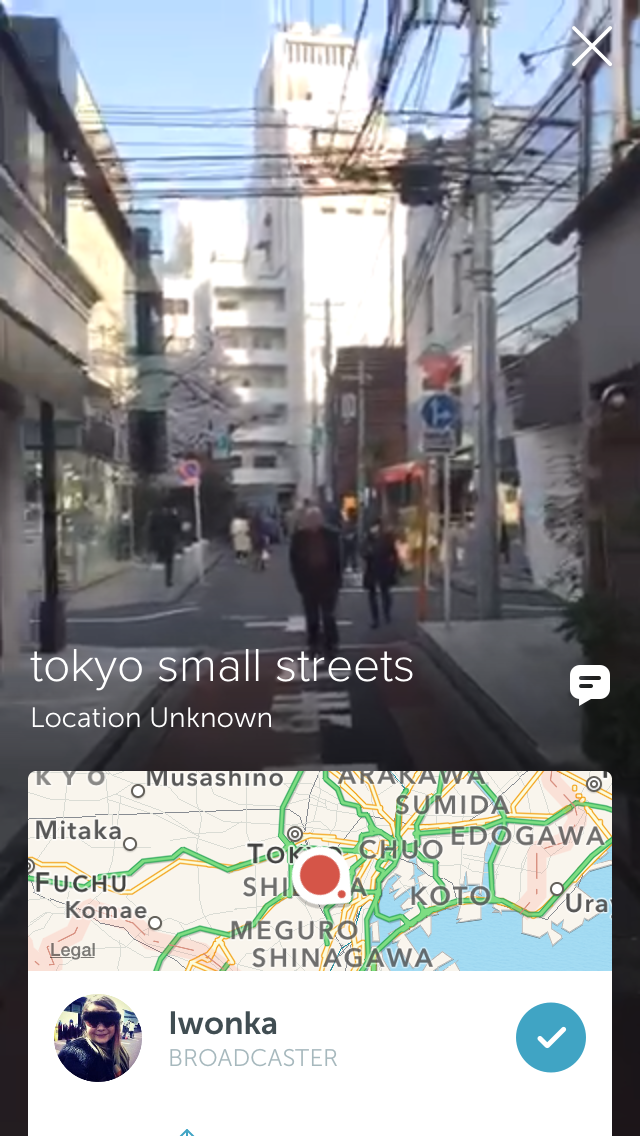Periscope



A man pointing his camera over Seattle in a ferris wheel. A woman walking the compact streets of Shibuya in Tokyo. A couple fielding questions from eager viewers while brushing their teeth before bed. Inside this one app, I could explore all corners of the globe, from the public streets to the very private spaces of homes. The broadcasters were eager to share their lives and excited to see others watching.
Periscope was launched by Twitter in March 2015. After downloading the app, anyone could broadcast live from their smartphone. Although services like Qik offered this functionality as early as 2007, the improvement of mobile networks and camera resolutions has created a new market opportunity for this kind of experience. Marketed as the chance to "explore the world through someone else's eyes," the parallels to webcams and the networked cameras that preceded it are obvious. While lifecasters like Justin Kahn were once considered a fad, Periscope brought this phenomenon back to the greater masses without the need to set up expensive equipment. Users can now broadcast their lives at their own leisure, exposing themselves and their worlds for short moments or longer hours at a time. No longer held back by their devices, realities all of kinds can now be shared without any resistance.
Anyone watching was hungry to know more about the subjects in frame. Even early on, asking broadcasters what was in their fridge became a staple meme on the app. One could glimpse an understanding about someone's life just from knowing about the foodstuffs in their fridge; after all, we are what we eat. Take out and cases of beer might mean they're the type that look for quick solutions when eating. Low fat cheese and yogurts may signal that someone is a disciplined health nut. In either case, we want to know more. We poke and prod these individuals with questions so we can form connections with them, even over things as benign as our fridges.
« Back to index